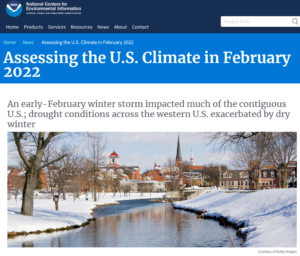Three-Peat or Triple-Dip is not a Cause for Celebration
We have discussed this before but the fact that there is a possibility of a third La Nina Winter is a good reason to discuss it again. I would say that is is not real likely. But if it happens, it would be very serious. So that is why it is worth discussing. We have not previously discussed how Global Warming makes any drought more dangerous but that should be obvious. We know that the negative phase of the Pacific Decadal Oscillation (PDO) results in a higher ratio of La Nina to El Nino Events. But we have not discussed how Global Warming might impact the PDO. So we are not addressing the broader question of whether or not Global Warming is increasing the chance of a third year of La Nina but simply looking at the evidence that a third year is a possibility. It seems that NOAA may be more concerned about the possibility than some other weather forecasting agencies in other part of the world, but we will attempt to show that their concern is not unreasonable.


